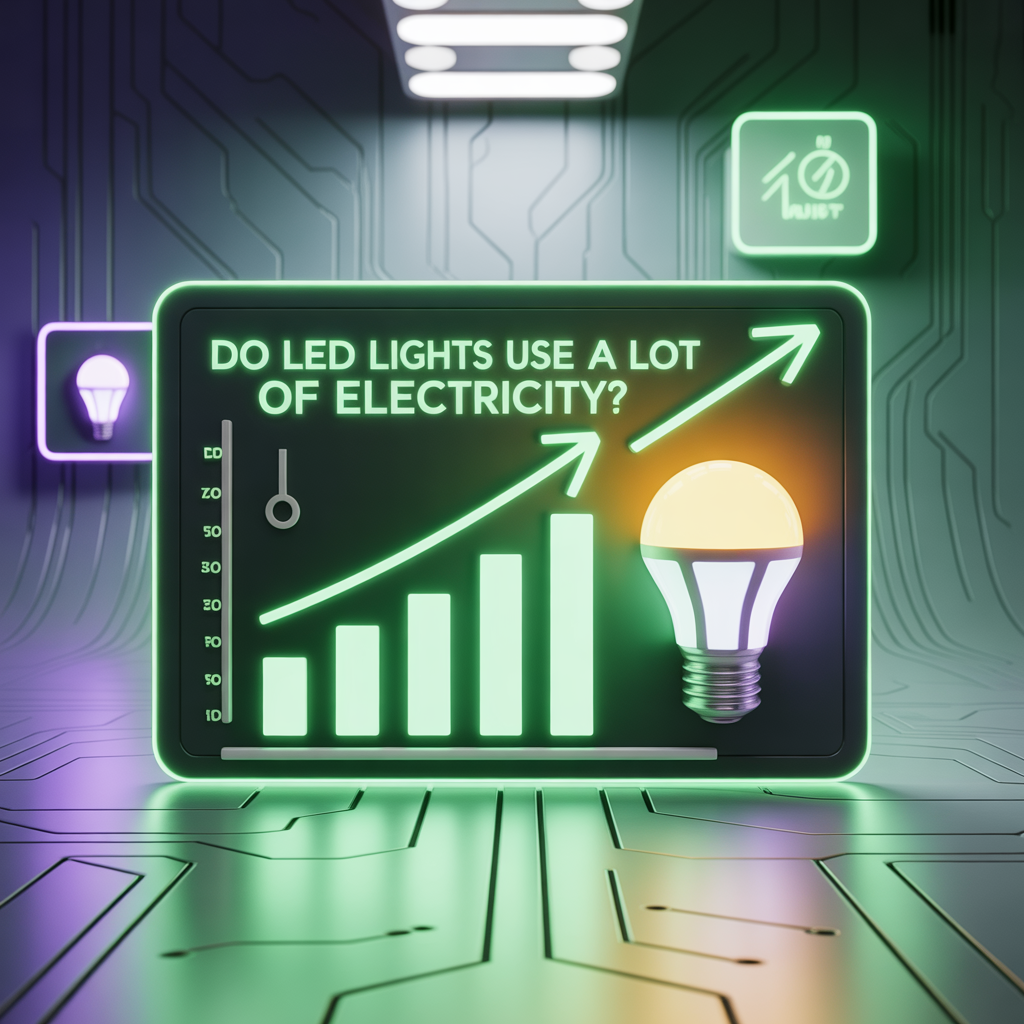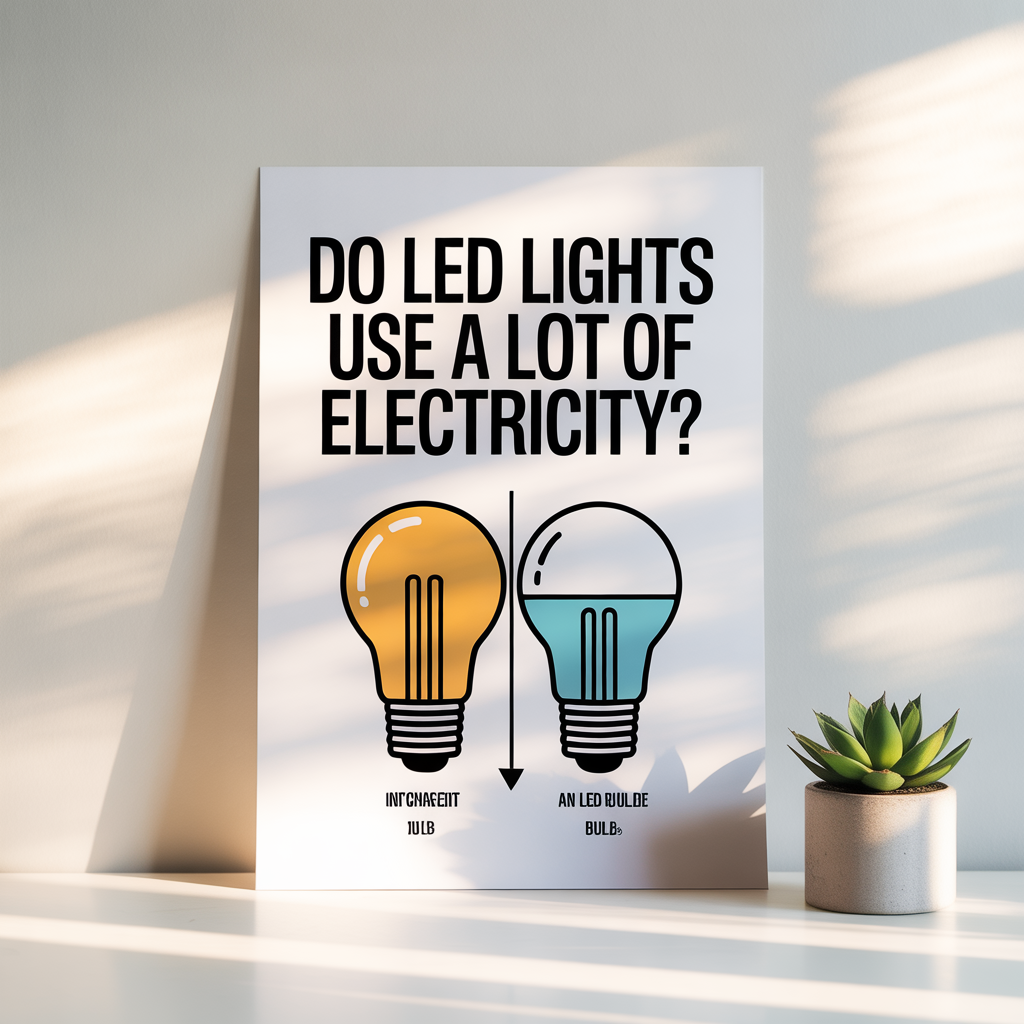Do LED Lights Use a Lot of Electricity? A Complete Guide
Are you considering switching to LED lighting but worried about energy costs? Do LED lights use a lot of electricity? This comprehensive guide will delve deep into the energy efficiency of LED lights, comparing them to traditional incandescent and fluorescent bulbs. We’ll explore the science behind their energy savings, address common misconceptions, and help you…
Are you considering switching to LED lighting but worried about energy costs? Do LED lights use a lot of electricity? This comprehensive guide will delve deep into the energy efficiency of LED lights, comparing them to traditional incandescent and fluorescent bulbs. We’ll explore the science behind their energy savings, address common misconceptions, and help you make informed decisions about your lighting choices. You’ll learn about wattage, lumens, energy efficiency ratings, and the long-term cost savings associated with LED technology. Let’s shed some light on this topic!
No, LED lights do not use a lot of electricity. They are highly energy-efficient, using up to 90% less power than traditional incandescent bulbs. This makes them a cost-effective and eco-friendly lighting option for both homes and businesses.
LEDs, or Light-Emitting Diodes, are semiconductor devices that produce light when an electric current passes through them. Unlike incandescent bulbs that produce light through heat, LEDs produce light directly, making them significantly more efficient. This direct conversion of electricity to light is the key to their energy-saving capabilities.
Do LED lights Use a Lot of Electricity?

Wattage and Lumens: Key Metrics
To understand LED energy consumption, we need to look at two crucial metrics: wattage (power consumption) and lumens (brightness). A lower wattage for the same lumen output indicates higher efficiency. For example, a 10-watt LED bulb can produce the same amount of light as a 60-watt incandescent bulb, meaning significant energy savings.
Read More: 11 Creative Bedroom Chandelier Lighting Ideas
Comparing LED Lights to Other Lighting Technologies
Incandescent Bulbs: The Inefficient Standard
Traditional incandescent bulbs are notoriously inefficient. They waste a significant amount of energy as heat, converting only a small percentage into visible light. This makes them a costly option in the long run.
Fluorescent Lights: A Step Up, But Not the Best
Fluorescent lights are more efficient than incandescent bulbs, but they contain mercury, a hazardous material. They also have a shorter lifespan compared to LEDs and can flicker or hum, making them less desirable.
The Science Behind LED Efficiency
Semiconductor Physics and Light Emission
The efficiency of LEDs stems from the principles of semiconductor physics. When an electric current flows through a semiconductor material (like gallium nitride or aluminum gallium indium phosphide), electrons recombine with holes, releasing energy in the form of photons (light particles).
Factors Affecting LED Energy Consumption

Bulb Wattage and Lumen Output: Understanding the Relationship
The wattage rating on an LED bulb indicates its power consumption. The lumen rating indicates its brightness. A higher lumen output for the same wattage means greater efficiency.
Read More: Upgrade Your Lighting: A Comprehensive Guide To Can Light LED Conversion Kits
Color Temperature and Energy Use
The color temperature of an LED bulb (measured in Kelvin) doesn’t directly affect energy consumption, but it can influence the perceived brightness. A warmer color (lower Kelvin) might appear dimmer than a cooler color (higher Kelvin) at the same lumen output.
Calculating Energy Savings with LEDs
A Simple Calculation: Comparing Wattage and Cost
Let’s say you replace a 60-watt incandescent bulb with a 10-watt LED bulb. The LED uses only 1/6th of the energy, leading to substantial savings on your electricity bill over time. You can calculate your potential savings based on your local electricity rates and usage patterns.
Long-Term Cost Benefits of LED Lighting
Reduced Electricity Bills: The Main Advantage
The most significant benefit of switching to LEDs is the reduction in electricity bills. The lower energy consumption translates directly to lower costs, particularly over the long lifespan of the bulbs.
Extended Lifespan: Fewer Replacements
LEDs have a much longer lifespan than incandescent or fluorescent bulbs. This means fewer replacements are needed, saving you money and time in the long run. A typical LED bulb can last 25,000 hours or more.
Environmental Impact of LED Lighting
Reduced Carbon Footprint: A Greener Choice
Because LEDs use significantly less energy, they contribute to a reduced carbon footprint compared to other lighting technologies. This is beneficial for the environment and helps mitigate climate change.
Choosing the Right LED Lights
Understanding Energy Efficiency Ratings
Look for bulbs with high lumens per watt ratings. This indicates higher efficiency. Energy efficiency labels often provide this information, making it easy to compare different bulbs.
Considering Dimmability and Other Features
Dimmable LEDs offer additional flexibility and energy savings. Some LEDs also offer color-changing options, although these might consume slightly more energy.
Installation and Maintenance
Easy Installation: A DIY-Friendly Upgrade
LED bulbs are generally easy to install, replacing standard screw-in bulbs in most fixtures. No special tools or expertise are usually required.
Minimal Maintenance: Long-Term Savings
LEDs require minimal maintenance. Their long lifespan reduces the frequency of replacements, and they generally don’t require special handling or disposal compared to fluorescent bulbs.
Addressing Common Misconceptions About LEDs
Myth 1: LEDs are too expensive
While the initial cost of LEDs might be higher than incandescent bulbs, the long-term savings in energy consumption often outweigh this difference. The lower replacement frequency further contributes to the cost-effectiveness of LEDs.
Myth 2: LEDs emit harmful radiation
Modern LEDs emit negligible amounts of ultraviolet (UV) or infrared (IR) radiation, making them safe for household use.
LED Light Applications
Residential, Commercial, and Industrial Uses
LED lighting is versatile and finds applications in various settings: homes, offices, factories, streetlights, and more. Their energy efficiency makes them a cost-effective choice across many applications.
Frequently Asked Questions
What is the average lifespan of an LED light bulb?
The average lifespan of an LED light bulb is significantly longer than incandescent or fluorescent bulbs, typically ranging from 25,000 to 50,000 hours, or even more, depending on the quality and usage.
Are LED lights dimmable?
Many LED lights are dimmable, offering more control over the brightness and ambiance. However, it’s crucial to ensure compatibility between the LED bulb and the dimmer switch to avoid flickering or malfunction.
How do I dispose of old LED light bulbs?
While LEDs don’t contain mercury like fluorescent bulbs, it’s still a good practice to recycle them properly. Check with your local waste management authority for recycling guidelines.
Can I use LED lights in any fixture?
Generally, yes. However, ensure the LED bulb’s base type (e.g., E26, E27) matches the fixture’s socket. Also consider the wattage and heat dissipation capabilities of the fixture.
Do LED lights produce heat?
LEDs produce far less heat than incandescent bulbs. While they do generate some heat, it’s significantly less and poses minimal risk.
Are LED lights better for the environment?
Yes, LED lights are significantly better for the environment than incandescent and fluorescent bulbs due to their lower energy consumption and reduced carbon footprint.
Final Thoughts
Switching to LED lighting is a smart investment for both your wallet and the environment. The initial cost might be higher, but the long-term energy savings and extended lifespan make LEDs a superior choice for residential and commercial applications. Their energy efficiency, lower heat output, and extended lifespan result in significant cost savings and contribute to a smaller carbon footprint. By understanding the key factors influencing energy consumption, you can make informed choices when selecting LED lights, maximizing their benefits and enjoying years of efficient, reliable illumination. Don’t wait any longer to experience the advantages of LED technology; make the switch today and start saving energy and money!

